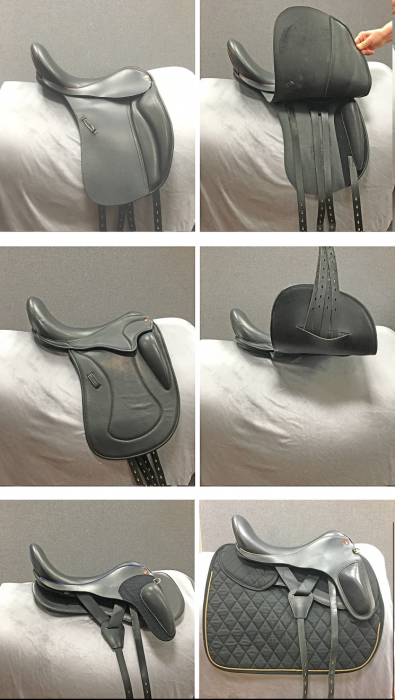
Rider's stability in a flapless and in a conventional saddle
Saddles have been developed to improve the comfort, safety and performance of the rider and horse. However, relatively few saddles have been subjected to rigorous scientific evaluation. Advantages that have been ascribed to the monoflap saddle include a reduction in saddle weight and closer contact between the rider's leg and the horse's ribcage. The flapless saddle goes a stage further in having no flaps which places the rider's legs even closer to the sides of the horse, from which they are separated only by a soft, cushioned saddle pad in the thigh region.
To analyse the effect of the flapless saddle on the stability of the rider, the position and range of motion of the COP (centre of pressure) of the rider was measured by a saddle pressure mat and compared with the results of riding with a conventional saddle.
Speed and stride length of each gait did not differ between saddles. The stability of the rider improved though in both the side-to-side direction as in the forwards-backwards direction in all gaits, while riding with the flapless saddle compared to the conventional saddle. Possibly, the closer contact between rider and horse augments the transfer of proprioceptive information. In addition, the lumbopelvic and hip musculature might be facilitated in the altered leg position, providing more secure stability of the translations and rotations of pelvis and trunk.
Expert opinion by Isabeau Deckers
Why do we ride with the saddle that we ride with? Why have we chosen for its current confirmation and which consequences does this have? This study provides proof for an important biomechanical statement, namely the closer the contact between the rider's legs and the horse, the greater the stability of the rider. And the greater the stability of the rider, the less inconvenient forces going through the body of both the equestrian as the equine athlete and thus the more beneficial for their physical welfare.
> From: Clayton et al., PLoS ONE 13(6) (2018) e0196960. All rights reserved to Clayton et al.. Click here for the online summary.


